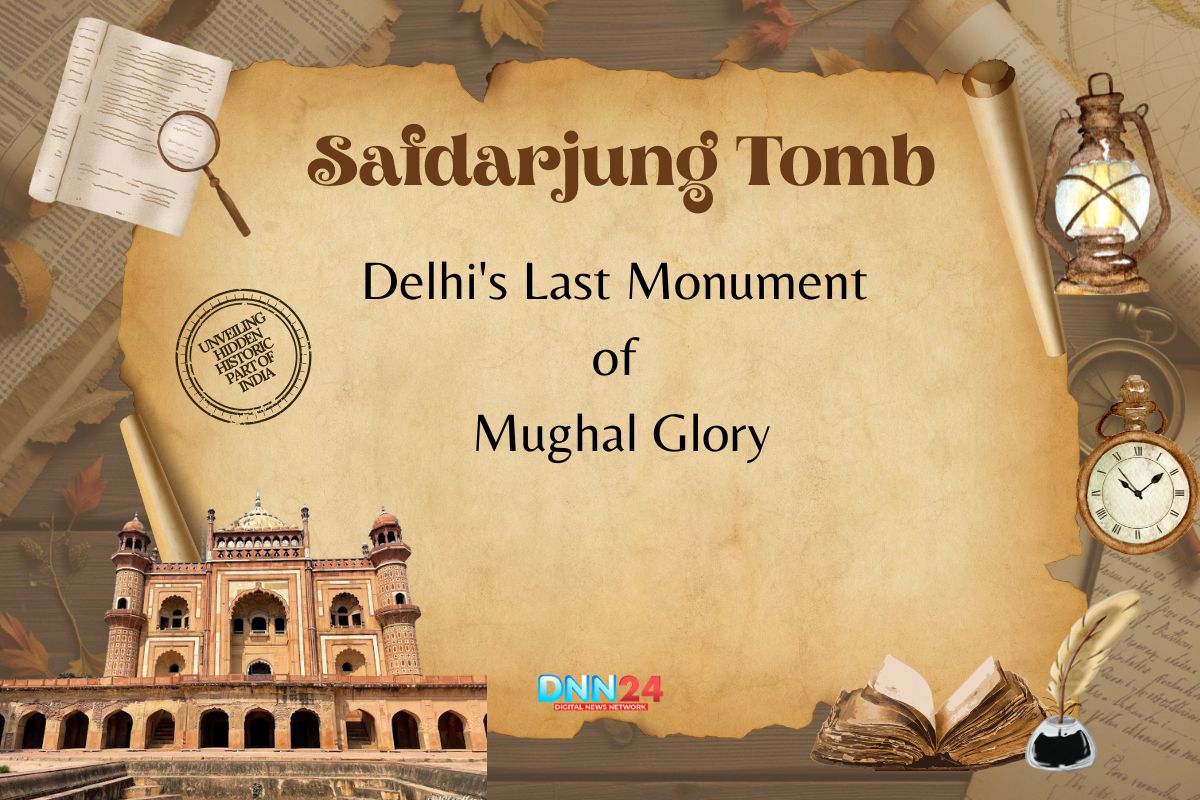Safdarjung Tomb stands as more than just a memorial to a powerful noble. It captures Delhi’s fading Mughal splendour, a time when political power shifted like sand and great families built their final monuments with whatever resources remained. Each carved archway and weathered stone tells stories of ambition, devotion, and the slow decline of an empire. Walking through its gardens feels like opening a history book where every chapter whispers of courtly intrigue, architectural brilliance, and a son’s love for his father. This monument transforms what could be just another tourist spot into something far more intimate, a place where red sandstone walls guard memories of dreams both fulfilled and lost.
Safdarjung Tomb : The Last Flicker of the Mughal Lamp
Picture Delhi in the 1750s. The Mughal throne wobbled under weak rulers, and the empire’s former magnificence was slipping away like water through cupped hands. Into this uncertain world stepped Safdarjung, born Mirza Muqim Abul Mansur Khan in Persia. He arrived from distant lands and climbed the political ladder to become Nawab of Awadh, eventually reaching the highest office as Prime Minister under Emperor Ahmad Shah Bahadur. People spoke of his sharp mind, bold decisions, and sometimes his pride. As the empire weakened around him, Safdarjung grew stronger.
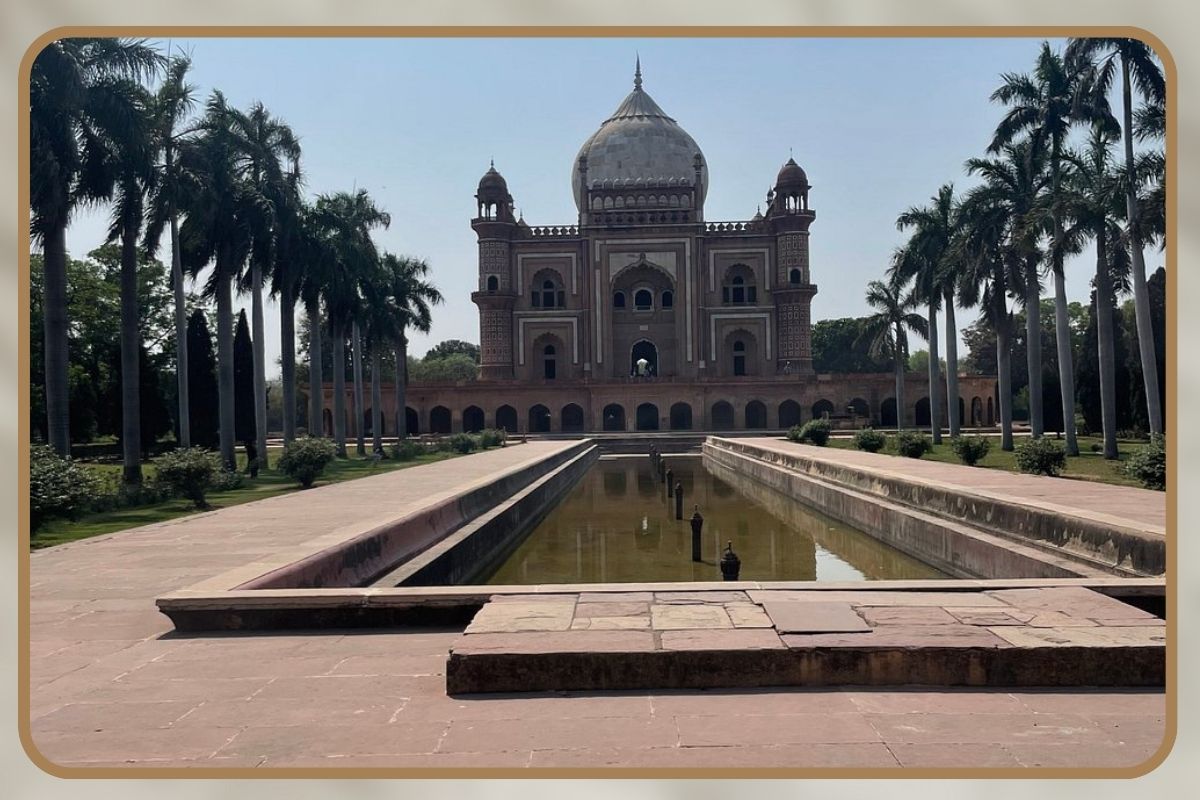
His influence stretched so wide that jealous nobles plotted against him. Delhi’s politics became a dangerous game where today’s ally could become tomorrow’s enemy. Accusations and suspicion finally drove him from the capital. He died in 1754 in Awadh, far from the seat of power he once commanded. His devoted son, Nawab Shujaud Daula, could not bear to let his father’s memory fade. He brought the body back to Delhi and spent three lakh rupees building this tomb when the treasury itself lay nearly empty. This was more than architecture, it was love carved in stone, a final gesture of defiance against forgetting, proof that even in decay, beauty and remembrance could survive.
Safdarjung Tomb’s Architecture: Echoes of Past, Voice of Its Own
Walk through the grand entrance and you find yourself in a Char Bagh garden tomb, similar to Humayun’s resting place yet distinctly different. The architect Bilal Muhammad Khan, who came from Abyssinia, blended Persian tradition with Mughal design and Indian touches. The central dome rises tall, reaching upward but not quite achieving the perfect proportions of earlier Mughal masterpieces. That slight imperfection mirrors the struggling empire itself. Red sandstone forms the main structure with buff coloured stone adding contrast, creating dramatic patterns when Delhi’s sun moves across the sky. Inside, the central chamber holds Safdarjung’s cenotaph surrounded by eight smaller rooms like silent guardians marking the hours.
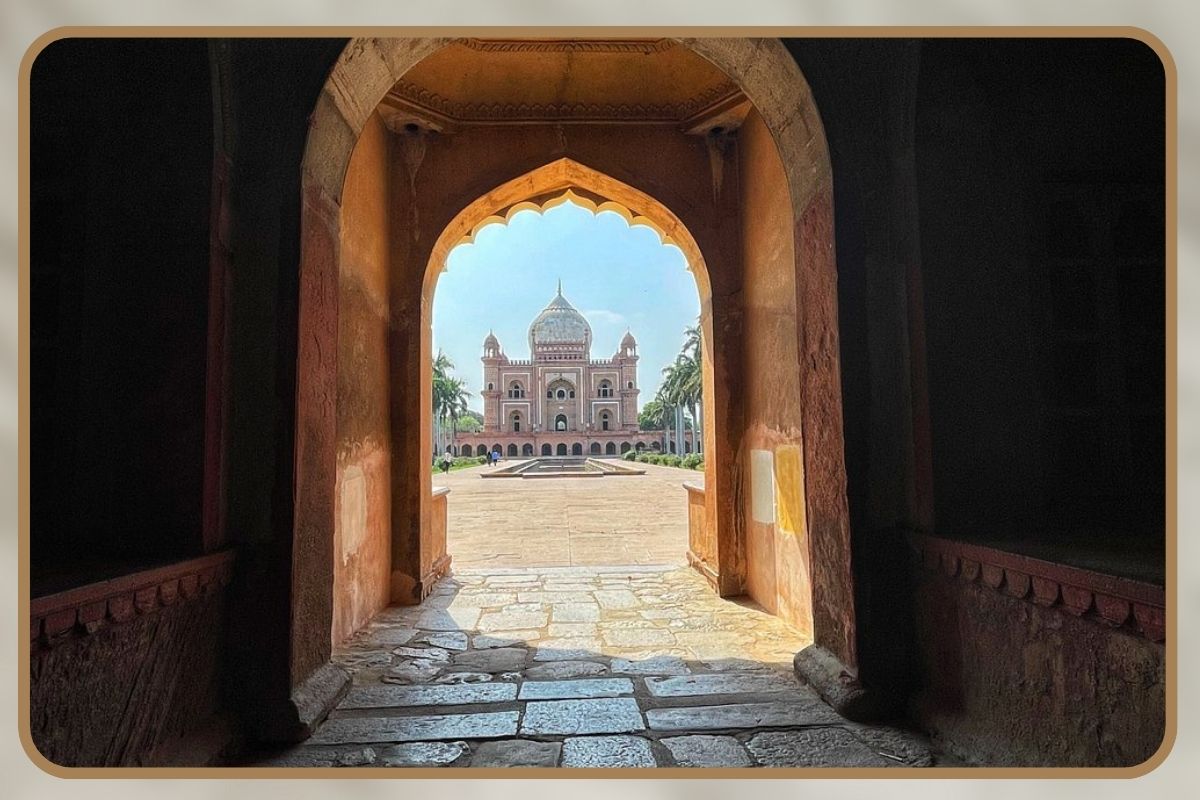
Light streams through latticed windows, casting shifting shadows on plasterwork decorated with flowers, Persian verses, and geometric designs. Four polygonal towers stand at each corner, each containing hidden staircases, small chambers, and one even houses a mosque for prayers. The floors display black and white tiles arranged in patterns that remind visitors of chess boards, fitting symbols for a life spent navigating political strategy. Craftsmen faced material shortages and famously took marble slabs from an older tomb belonging to Abdul Rahim Khan-i-Khanan, proof that Delhi constantly rebuilds itself from its own past. Historians note the design lacks the perfect harmony of the Taj Mahal or Humayun’s Tomb. Instead, it presents a grand but slightly flawed final performance of Mughal architectural tradition, beautiful precisely because it emerged from both strength and struggle during difficult times.
Safdarjung Tomb: Hidden Lives and Unfolding Stories
The gardens surrounding the tomb hold their own secrets. Pavilions with poetic names scatter across the grounds, Jangli Mahal meaning Palace in the Woods, Moti Mahal the Pearl Palace, and Badshah Pasand known as the King’s Favourite. These names hint at a vanished world of courtly life, evenings filled with music and poetry, silk garments rustling in the breeze. An Arabic inscription above the entrance offers comfort: “When the hero of plain bravery departs from the transitory, may he become a resident of God’s paradise.” Below ground, in a quiet chamber, Safdarjung rests beside his wife, their love preserved in stone while the world above changes constantly. This very ground witnessed violence centuries earlier when Tughlaq warriors fought bloody battles in the 14th century.
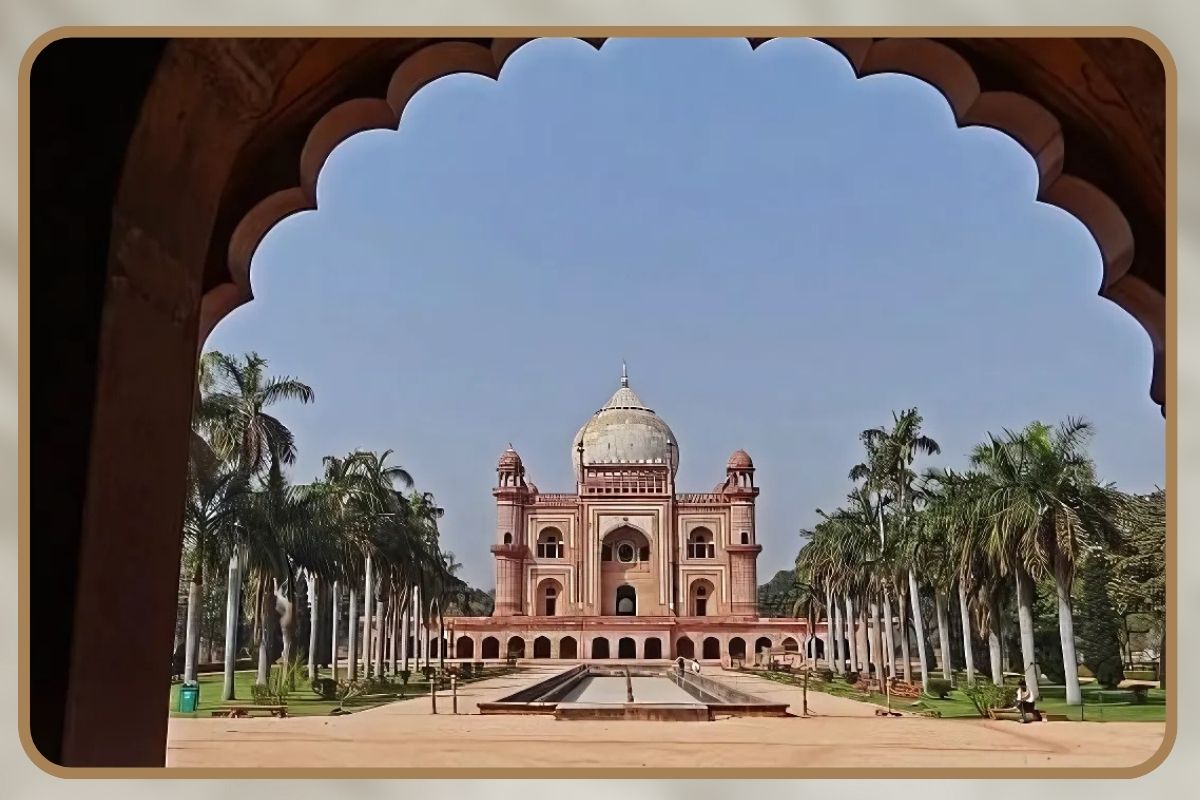
Every patch of earth around the tomb carries layers of Delhi’s turbulent history. Visit at dawn or sunset and you might see artists sketching the domes, children running along pathways, or film crews capturing nostalgic scenes. History was once written here through power struggles and pain. Now it lives again as ordinary people find their own meanings, students studying under trees, joggers circling the gardens, couples seeking quiet corners, stray dogs sleeping in cool shadows. The monument has transformed from an exclusive memorial into a shared public space where everyone discovers something personal among the ancient arches and peaceful greenery.
Today’s Relevance: Beauty, Solitude, and Echoes
In modern Delhi, Safdarjung’s Tomb remains surprisingly peaceful despite the city’s constant noise and growth. Skyscrapers rise in every direction, traffic roars nearby, yet these gardens offer a rare pocket of calm. Tourists arrive seeking what scholars call “the last flicker of the Mughal lamp,” the final grand monument before the empire collapsed completely. The site serves many purposes now. Architects study its unique fusion of Persian and Indian styles. Conservation experts debate how to preserve fading frescoes and crumbling plaster. Regular Delhiites treat it as an oasis for morning walks, photography sessions, or simple moments of solitude away from urban chaos. Heritage groups organize walks through the grounds, schools bring children to learn history firsthand, and social media enthusiasts hunt for perfect photo angles.
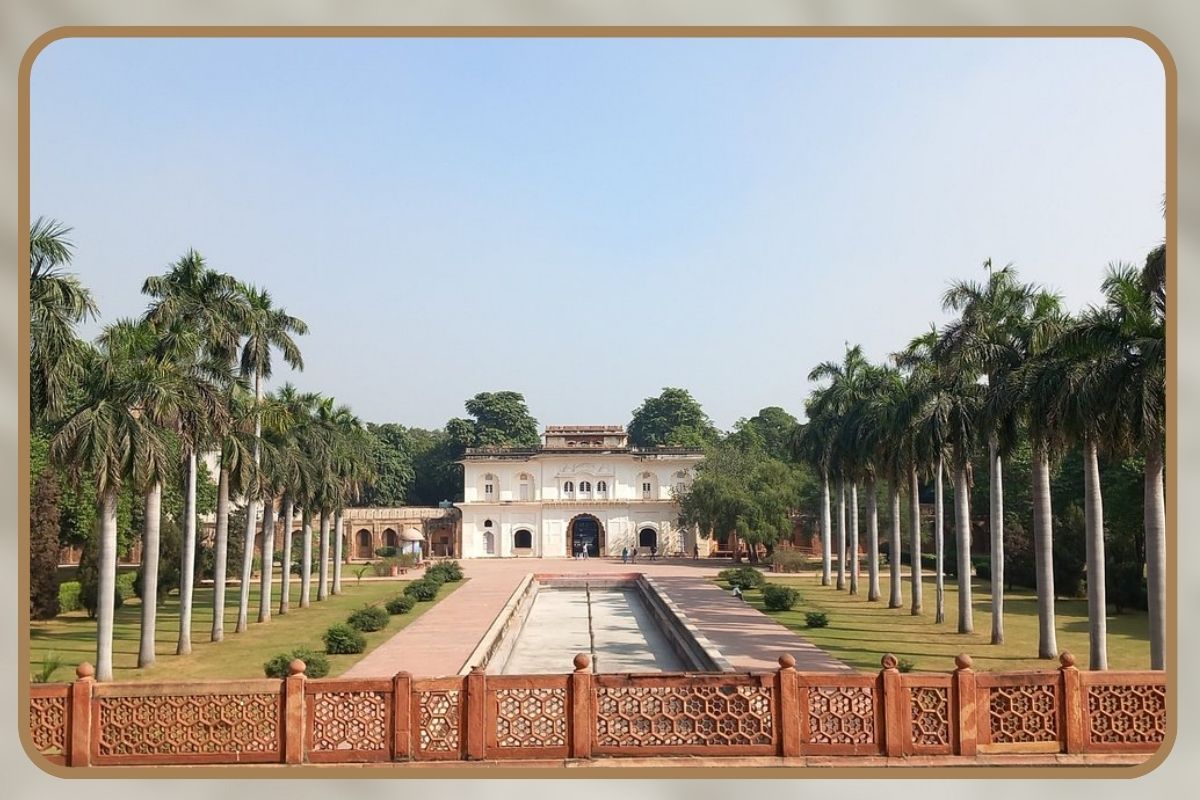
Some visitors see poetry in the cracks spreading across old walls, viewing them as reminders that nothing lasts forever unchanged, yet beauty continues speaking across centuries. Annual discussions about conservation highlight challenges of protecting such rare historical sites from pollution and neglect. The surrounding area pulses with contemporary life, busy roads, a major hospital, and even an airport carrying Safdarjung’s name, proving his story remains woven into living Delhi rather than locked in the past. The tomb functions not as a dead relic but as an active presence, teaching patience and perspective. It reminds everyone that power fades and people pass, but beauty endures in unexpected, touching forms. Thus, Safdarjung’s Tomb preserves more than one nobleman’s remains. It holds the collective sighs of an entire era, the quiet defiance of final dreams, and the patient endurance of red stone beneath Delhi’s blue skies, a poem hidden in plain sight at India’s capital heart.
Also Read: Malcha Mahal: Delhi’s Mysterious Royal Palace Where Dreams Turned to Dust
You can connect with DNN24 on Facebook, Twitter, and Instagram and subscribe to our YouTube channel.

